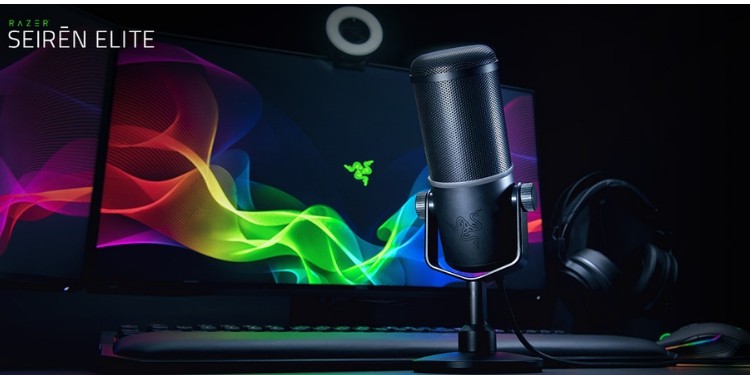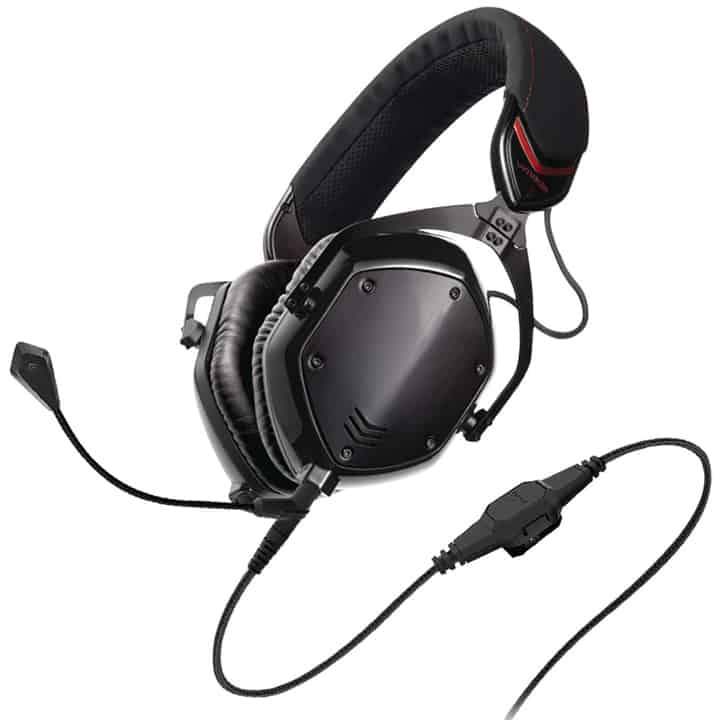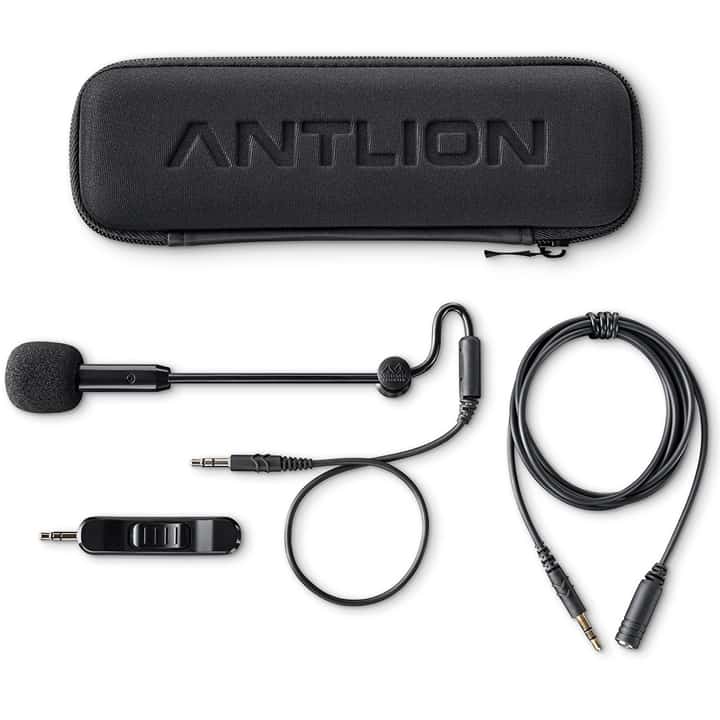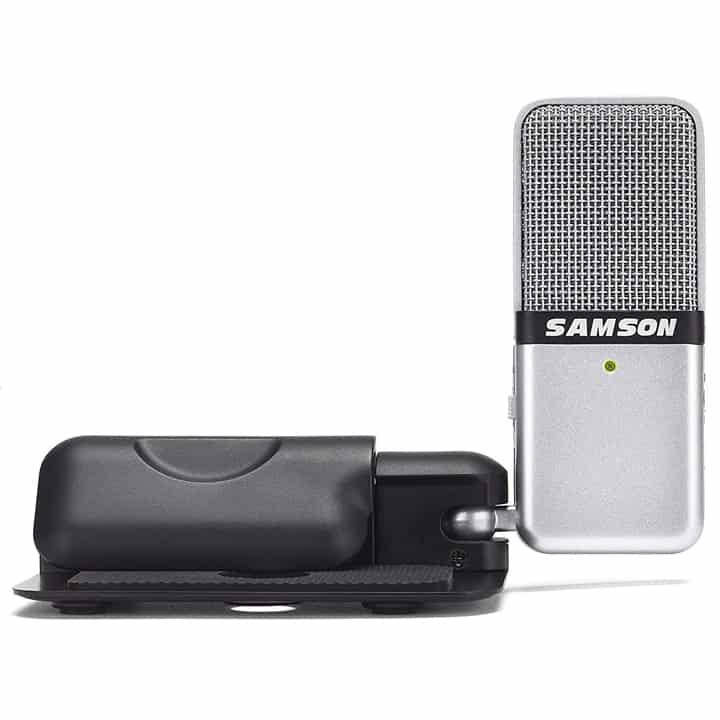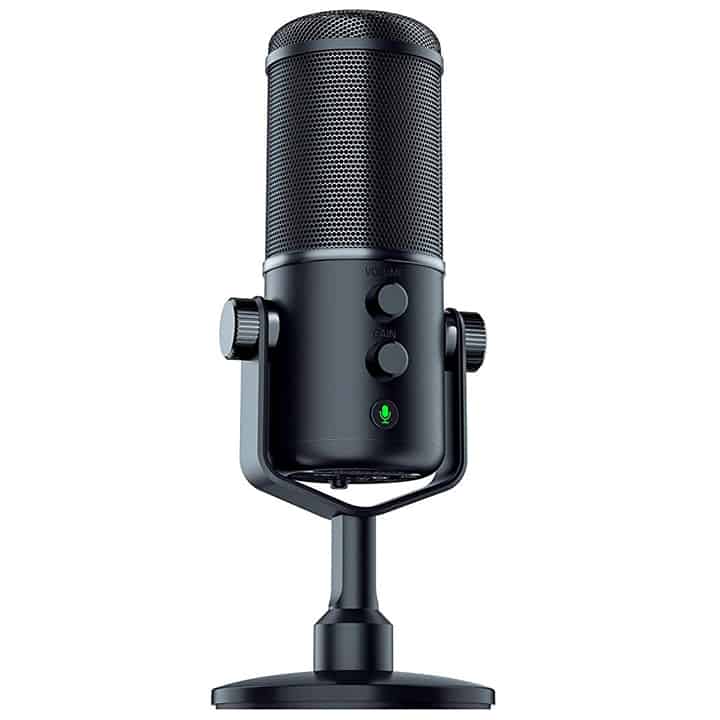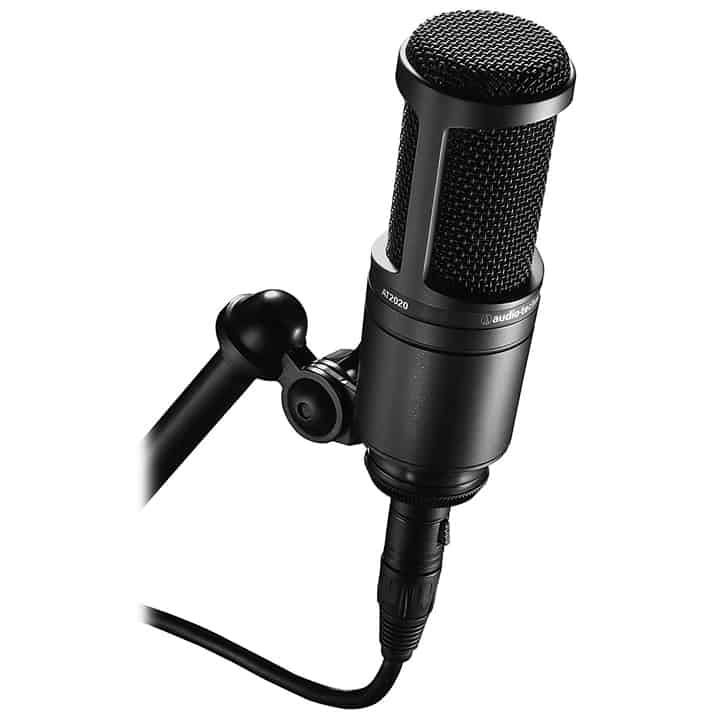Whether you just want a good microphone for gaming or the absolute best computer microphone, don’t worry: we have you covered. In this article, we’re going to go over 6 of our top picks for best gaming mic. Whether you’re on a thin budget or want something truly high-end, we’ll have a choice for you below.
Each of our six entries will include a quick list of specs, a pros and cons list, and our own thoughts on the product in question. If you feel confused by anything listed, we’ve also included a buyer’s guide below our reviews that you can reference at your leisure. You don’t need to be a mic expert coming into this article: we can still find the right hardware for you.
Let’s begin.
best cheap
V-MODA BoomPro
- Connectivity: USB
- Form Factor: Attachable
- Polar Patterns: Omnidirectional
- Frequency Response: Unlisted
- Controls: Physical
- Extras: N/A
Excellent for gaming
Antlion Audio ModMic 5
- Connectivity: USB
- Form Factor: Attachable
- Polar Patterns: Cardioid, Omnidirectional
- Frequency Response: 100 Hz–10 kHz
- Controls: Physical
- Extras: Case
Fairly small
Samson Go Portable USB Mic
- Connectivity: USB
- Form Factor: Mini Portable
- Polar Patterns: Cardioid, Omnidirectional
- Frequency Response: 20Hz–18kHz
- Controls: Physical
- Extras: Case, Clip
best for streamers
Blue Snowball USB Microphone
- Connectivity: USB
- Form Factor: Standing Desktop
- Polar Patterns: Cardioid, Omnidirectional
- Frequency Response: 40 Hz - 18 kHz
- Controls: Physical
- Extras: Stand Included
Amazing overall quality and specs
Razer Seiren Elite
- Connectivity: USB
- Form Factor: Standing Desktop
- Polar Patterns: Cardioid, Bidirectional, Omnidirectional, Stereo
- Frequency Response: 20 Hz – 20 kHz
- Controls: Physical and software
- Extras: Built-in filter
best desktop microphone
Audio-Technica AT2020 Cardioid Studio XLR Microphone
- Connectivity: XLR
- Form Factor: Mounted Microphone
- Polar Patterns: Cardioid
- Frequency Response: 40 Hz - 20 kHz
- Controls: N/A
- Extras: N/A
Table of Contents
1. V-MODA BoomPro
The best cheap gaming microphone is the V-MODA BoomPro
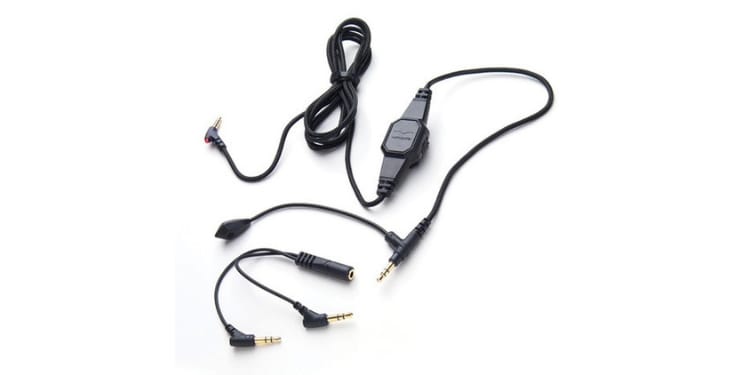
- Connectivity: USB
- Form Factor: Attachable
- Polar Patterns: Omnidirectional
- Frequency Response: Unlisted
- Controls: Physical
- Extras: N/A
- The cheapest entry on this list
- Despite no listed freq. response, good sound quality
- No real extras
- Good for in-game comms and not much else
If all you need is the cheapest acceptable microphone for gaming, go with the V-MODA BoomPro. It should be better than just about any built-in gaming headset microphone, or at least equivalent with the high-end ones. We recommend attachable clip-on microphones for gaming purposes since headphones are essentially required for strong in-game spatial awareness.
We couldn’t find the frequency response for this mic, but according to reviews elsewhere and our own tests, it’s perfectly fine for in-game voice.
2. Antlion Audio ModMic 5
The best gaming mic, especially for headphone users
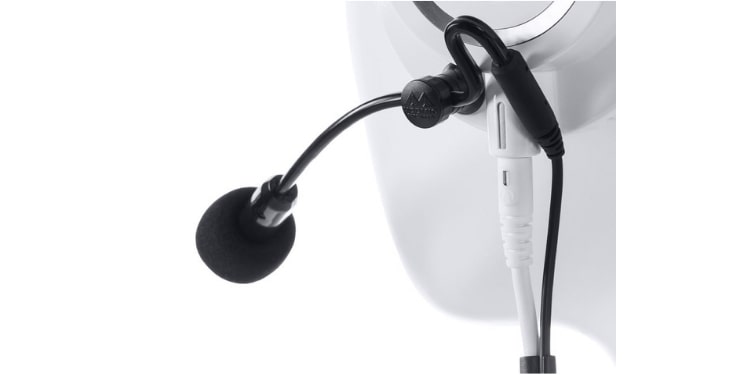
- Connectivity: USB
- Form Factor: Attachable
- Polar Patterns: Cardioid, Omnidirectional
- Frequency Response: 100 Hz–10 kHz
- Controls: Physical
- Extras: Case
- Balanced budget pick
- Excellent for gaming and VoIP
- Surprisingly good frequency response
- Case included
- Not suited for pro recording
Another mic suited mostly for in-game comms is the Antlion Audio ModMic 5. This is actually the most popular attachable mic on the market, and its solid specs help demonstrate why. While a starting range of 100 Hz is well above anything professional-grade, the overall range is perfectly fine for voice communication in and out of game.
While we wouldn’t recommend this for pro recording, the voice quality is good enough for light streaming and video content creation. The ability to toggle omnidirectional and cardioid polar patterns actually comes in handy here, since the latter helps cancel out, say, keyboard noises during game comms.
If you plan on making a living with audio recording, this isn’t the mic for you. But if all you need is strong voice quality with good build quality, noise-cancelation, and a few extras… the ModMic 5 stands out.
3. Samson Go Portable USB Mic
The best portable mic for PC gaming
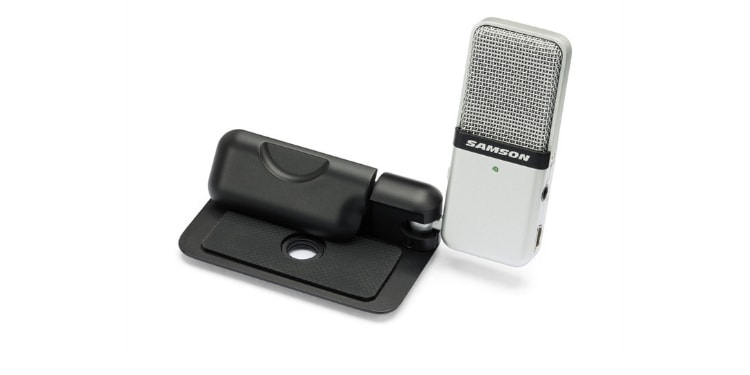
- Connectivity: USB
- Form Factor: Mini Portable
- Polar Patterns: Cardioid, Omnidirectional
- Frequency Response: 20Hz–18kHz
- Controls: Physical
- Extras: Case, Clip
- Fairly cheap
- Fairly small
- Insanely good frequency response range
- Software and case included!
- Iffy build quality
This is actually an incredibly strong microphone. Despite its small size and low price, it offers most of the features that you should be looking for in a mic.
We wouldn’t recommend this for, say, recording your debut EP, but its form factor makes it great for on-the-go streamers, vloggers, and content creators, though. The high frequency response means it should pick up just about anything you need it to, and the ability to toggle polar patterns is a godsend for voice comms.
In addition to the solid specs and small size, you also get the bonus of an included case and clip. Unfortunately, this is also where we found a catch: while the case and stand are of high quality, the bottom of the mic is not. It’s made with plastic, and that makes it a bit fragile. While this is great for on-the-go professionals, be sure to treat it with extra care.
4. Blue Snowball USB Microphone
The best PC microphone for streamers on a budget
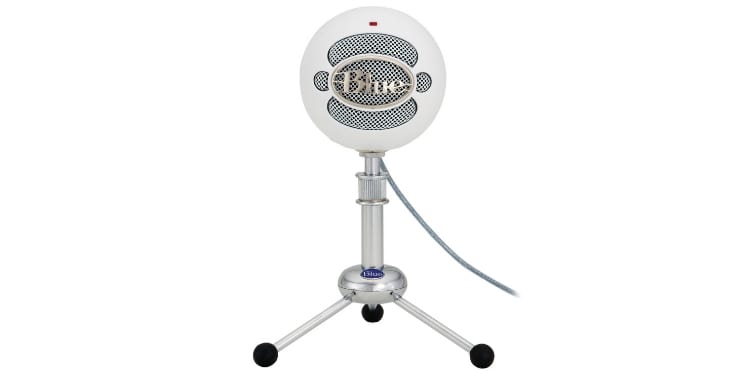
- Connectivity: USB
- Form Factor: Standing Desktop
- Polar Patterns: Cardioid, Omnidirectional
- Frequency Response: 40 Hz - 18 kHz
- Controls: Physical
- Extras: Stand Included
- Fairly-priced
- Strong frequency response and quality
- Plentiful color options
- Included stand
- Larger size
If you’re a burgeoning streamer or content creator, chances are you don’t have an extra $200 to spend on a microphone. However, you still need a microphone that will provide something comparable to professional audio quality. If you don’t mind a large physical size, then our first recommendation, in this case, would be the Blue Snowball, which is a favorite among content creators everywhere.
It has a fairly strong frequency response range, supports up to three recording modes, and it has a built-in stand. The three modes allow you to choose from two versions of cardioid (one that’s better for recording, say, loud instruments) and one omnidirectional recording options. You also have a ton of color options to pick from, which is nice if you want a mic that fits with your particular setup’s aesthetic flair.
Most importantly, this mic is incredibly fairly-priced for the features and build quality on offer. It’ll still run you about ~$60 or so, but that’s a much easier pill to swallow than $200 on a microphone.
It’s also worth noting that our biggest complaint-- its size-- are a bigger deal for gamers, less of a deal for streamers, and isn’t really a problem for pros.
5. Razer Seiren Elite
The best microphone for streaming, if you can afford it
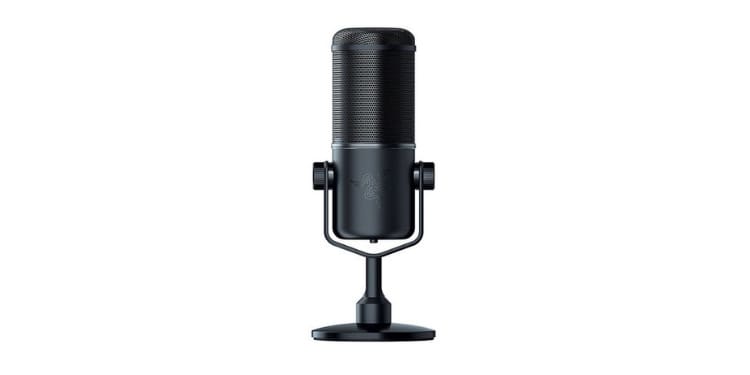
- Connectivity: USB
- Form Factor: Standing Desktop
- Polar Patterns: Cardioid, Bidirectional, Omnidirectional, Stereo
- Frequency Response: 20 Hz – 20 kHz
- Controls: Physical and software
- Extras: Built-in filter
- Amazing overall quality and specs
- Built-in filter, software noise-cancellation features
- The best streaming mic, no extra hardware required
- Built-in stand
- VERY high price
The singular downside of this mic is that it’s expensive.
Aside from that… you have an incredibly powerful piece of kit here. It boasts the best frequency response of any microphone on this list, a ton of different polar patterns and recording options, and even a built-in pop filter! One of its most interesting features is actually its noise cancellation software, though, which helps wipe out background noise near-completely and provides amazing vocal quality.
However, it does have one downside… this is still a digital USB microphone, as opposed to an analog XLR one. XLR microphones boast a level of sound quality that USB can’t quite match and better compatibility with professional recording equipment. If you also happen to moonlight as a musician, then this microphone probably isn’t the best one for you.
For streaming, vlogging, and any other kind of voice-centric content creation, though… this is what you’re looking for.
6. Audio-Technica AT2020 Cardioid Studio XLR Microphone
The best desktop microphone for professionals
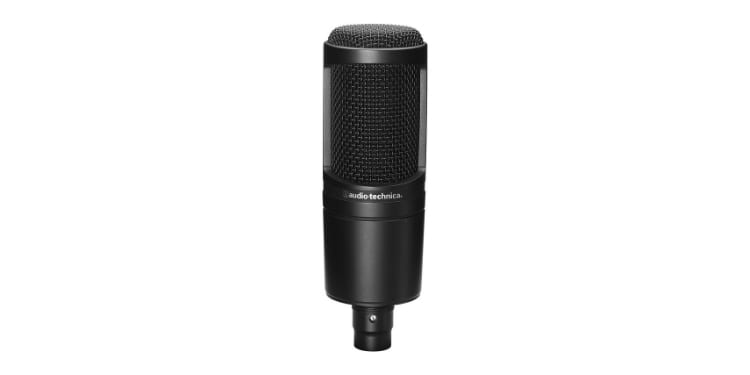
- Connectivity: XLR
- Form Factor: Mounted Microphone
- Polar Patterns: Cardioid
- Frequency Response: 40 Hz - 20 kHz
- Controls: N/A
- Extras: N/A
- Amazing overall quality and specs
- Built-in filter, software noise-cancellation features
- The best streaming mic, no extra hardware required
- Built-in stand
- VERY high price
Last but not least is our sound pro option, which is actually… cheaper than the Razer one, at least at the time of writing. While higher-end microphones do exist, this has been a favorite among independent musicians and voice actors for quite a few years now, thanks to its stellar sound quality and fair pricing.
We wouldn’t recommend a mic like this for common gaming or content creation, though. XLR microphones are built to be used in home studios, for things like voice acting and vocals. You can use this for gaming and content creation-- it’ll still sound superb-- but pricing-wise, it’s a little bit overkill for those applications.
Plus, you’ll need to provide your own stand and pop filter.
Note: If you’re using an XLR mic, you will need some extra equipment (read the description before committing to a purchase). Don’t have it and don’t mind paying extra? Grab the USB version of this mic! You will lose some XLR benefits, namely analog sound and improved compatibility with pro-equipment, though.
How To Buy The Best Microphone For Gaming
If you don’t understand all the specs and jargon listed above, don’t worry: most people probably don’t. In this section, we’ll help break it down so you can understand it more easily.
Tech Specs
The most important tech specs are the polar pattern and frequency response, which we’ll explain below.
Polar Pattern
Polar pattern refers to the directions in which the microphone picks up audio. The two main polar patterns you’ll see out in the wild are cardioid and omnidirectional.
Cardioid functions in a curve where the front of the mic is the most sensitive, the exact rear of the mic doesn’t pick up noise at all, and the sides progress from loud-to-quiet as they go front-to-back. In other words, cardioid mics are best used with the front pointed in the direction of what they’re recording, and generally won’t pick up much of (if anything) placed behind them.
Omnidirectional mics are…well, omnidirectional. They pick up sound with equal sensitivity in all directions, which can be ideal for capturing the sounds of a room for, say, ASMR. Without proper configuration, though, they are more likely to pick up unwanted background noise in game comms and voice calls.
Frequency Response
To hyper-simplify this, frequency response refers to the range of audio the mic can pick up. You want the first number to be as low as possible, and the highest number to be as high as possible (well, technically humans can only hear up to around 20 kHz, but still)… at least in theory.
For most voice applications, especially gaming and VoIP, you don’t need as large a range for clear speech. Unless you speak in barely-perceptible screeches, you don’t need to get a crazy wide range on your microphone.
Where you will want the highest range possible is for professional voice recording, ASMR, and recording music.
What Do You Need?
If you still aren’t sure what to pick, let’s break down what to prioritize depending on what kind of consumer you are.
Gamers need...
- An ideal form factor that doesn’t interfere with headphones (clip-on or portable)
- Preferably cardioid mics
- Decent frequency response for clear in-game comms
Streamers need...
- Wide frequency response for clear voice in streams and videos
- Preferably cardioid mics
- Noise-cancellation, via software or hardware
Pros need...
- A form factor compatible with custom mounting solutions
- XLR compatibility (for musicians)
- The widest possible frequency response for clean vocals, music, and anything else that needs to be recorded
- Cardioid if recording voice; omnidirectional if recording music or anything else
